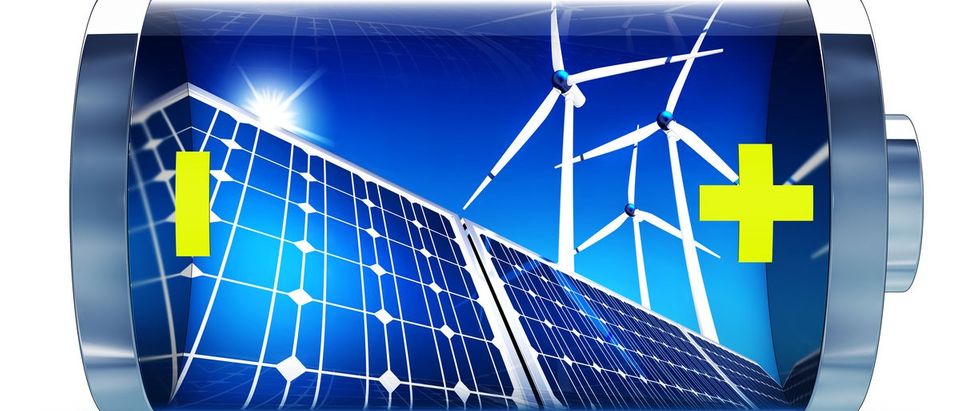Trying to store green energy in a battery does more harm to the environment than good, according to a new study by the University of Texas Energy Institute.
Storing solar energy in batteries for nighttime use actually increases both energy consumption and carbon dioxide (CO2) emissions, the study found. Researchers concluded that homes which used battery storage ended up consuming between 8 percent and 14 percent more electricity than homes that didn’t.
“The researchers also found that adding storage indirectly increases overall emissions of carbon dioxide, sulfur dioxide and nitrogen dioxide based on today’s Texas grid mix, which is primarily made up of fossil fuels,” reads a summary of the research. “Because storage affects what time of day a household draws electricity from the grid, it also influences emissions in that way.”
Burning natural gas for electricity will generally result in lower pollution and fewer CO2 emissions than trying to store green energy in batteries — largely because batteries waste a lot of power charging themselves.
Storing enough electricity in batteries to support wind and solar power also face enormous physical problems, which could make it economically impossible, according to another study published in June by chemists at Texas A&M.
It turns out that when electrons combine with the lithium ions in a battery, they distort the electronic structure of the device, essentially trapping unused energy in the battery, causing it to degrade rapidly. This means that it may be inherently impossible to store large amounts of electricity cost effectively in a battery.
“Fundamentally, when you have a battery, every time you use it, it starts to die a little bit,” Dr. Sarbajit Banerjee, a chemistry professor at Texas A&M, wrote in a press statement. “The more you use it, the more it dies. Eventually, it becomes unusable. Theoretically speaking, you expect a certain performance from a battery, and you rarely ever get there. People have been at a loss to understand all the factors that contribute to this lack of full capacity.”
Without large-scale energy storage, the power grid needs demand for energy to exactly match supply to function properly. Power demand is relatively predictable, and conventional power plants, like nuclear plants and plants using natural gas, can adjust output accordingly. Solar and wind power, however, can’t easily adjust output and provide power unpredictably relative to conventional power sources.
The power they do provide generally doesn’t coincide with the times when power is most needed either, which is why storage is required. Peak energy demand also occurs in the evenings, when solar power is going offline. Without about 150 times more capacity to store power for later use, wind and solar simply won’t work.
America has less than 1 percent of the energy storage capacity necessary for wind and solar to meet the green goal of “100 percent green energy,” according to an analysis of federal data published last June by The Daily Caller News Foundation.
Send tips to andrew@
All content created by the Daily Caller News Foundation, an independent and nonpartisan newswire service, is available without charge to any legitimate news publisher that can provide a large audience. All republished articles must include our logo, our reporter’s byline and their DCNF affiliation. For any questions about our guidelines or partnering with us, please contact licensing@dailycallernewsfoundation.org.


